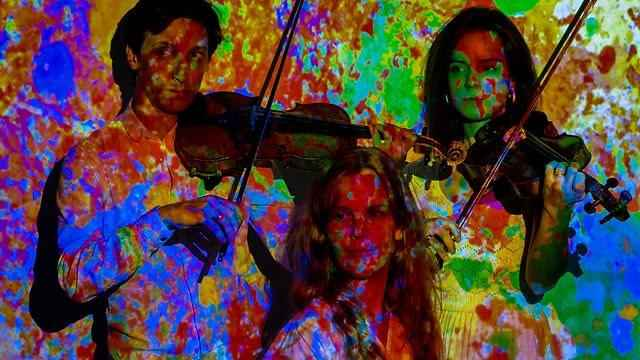Ever wondered if there is any way you can see music? For some iconic musicians such as Pharrell Williams, Billie Eilish, Frank Ocean, Mozart, etc. this is not just a metaphor—it’s reality. These artists experience a phenomenon called chromesthesia.
The science behind chromesthesia
Chromesthesia is a type of synesthesia where individuals perceive sounds as colors, often seeing vivid hues in response to music, voices and other sounds. For someone with this condition, a trumpet blast might conjure a flash of gold or a guitar riff might radiate deep green. These colors aren’t random—they can be consistent for each person. A C note may always be blue, or a certain genre might appear in shades of red and orange. But why does this happen?
Most of us can attribute different sounds to color. However, chromesthesia is inherent and involuntary. Studies have shown that chromesthesia most likely results from cross-activation between the brain’s auditory and visual areas. Typically, these regions stay separate. But for people with chromesthesia, sounds activate the visual cortex leading to a blend of sound and sight. It is a very rare phenomenon; reportedly around 2% to 4% of the population have synesthesia.
Impact of chromesthesia on music production
Individuals experience chromesthesia in different ways. Often this characteristic influences the creative direction of musicians. Pharrell Williams experiences it in a straightforward way. Each sound or chord reveals a distinct color, allowing him to create songs that feel cohesive in both sound and visual tone. Billy Joel has a unique experience with chromesthesia, associating different colors with lyrics. Strong vowel sounds evoke shades of blues and greens, while consonants are linked to vivid reds and golds. For Lorde, chromesthesia isn’t just about seeing static colors with sounds; it’s an emotional mapping tool. She describes her experience as feeling the emotional tone of color alongside the sound, which helps her create music that resonates emotionally.
In conclusion
Our brains have unique ways of experiencing creativity as evidenced by chromesthesia. It sits at the fascinating intersection of science and creativity, transforming sound into color and reshaping how music is experienced and produced. For those with this condition, music is a world not only heard but also seen—a sensory blend that redefines how they connect with sound.
If you want to test if you have chromesthesia, check out this video by Good Mythical Morning.
written by Nasheetat Rahman


